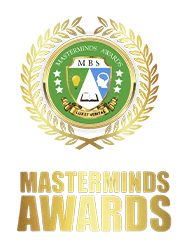Essential Tips for Business Administration: Boost Efficiency, Growth, and Success

Essential Tips for Business Administration: Business administration is a critical function in any organization, responsible for planning, organizing, directing, and controlling resources to achieve the business’s goals effectively. Whether managing a startup, a large corporation, or a nonprofit, business administrators are essential for ensuring that operations run smoothly, that teams are aligned, and that goals are met. Mastering business administration can enhance a company’s overall productivity, profitability, and stability. This article provides essential tips that can help you excel in business administration, from planning and strategy to finance, people management, and technology. Develop a Strategic Vision and Plan One of the cornerstones of successful business administration is having a clear and actionable strategic vision. A well-defined business strategy aligns all departments and employees with the company’s long-term objectives, providing a roadmap for growth. Key Steps for Effective Strategic Planning: Define Mission and Vision: Outline your organization’s mission and vision to establish a shared purpose. Set SMART Goals: Create specific, measurable, achievable, relevant, and time-bound (SMART) goals. Conduct Market Research: Understand your industry landscape, customer needs, and competitors to inform your strategy. Adjust as Needed: Regularly review and adjust the strategy to adapt to changes in the market or internal business conditions. Prioritize Financial Management Sound financial management is vital to a business’s sustainability and growth. Business administrators must be adept at managing budgets, monitoring cash flow, and analyzing financial reports to make informed decisions. Tips for Strong Financial Management: Create a Realistic Budget: Outline expenses and revenues in advance, and adjust for any expected changes. Monitor Cash Flow: Track all financial transactions and ensure sufficient liquidity to meet obligations. Use Financial KPIs: Utilize key performance indicators (KPIs) like profit margins, return on investment (ROI), and customer acquisition costs to gauge financial health. Prepare for Uncertainties: Set up an emergency fund or contingency budget for unexpected expenses. Foster Efficient Time Management Efficient time management is essential to handling daily tasks and long-term projects. Business administrators often juggle multiple responsibilities, and optimizing time can significantly improve productivity. Best Practices for Time Management: Prioritize Tasks: Rank tasks based on urgency and importance, focusing on high-priority items first. Delegate Responsibilities: Delegate tasks to team members according to their strengths and expertise. Use Project Management Tools: Leverage digital tools like Trello, Asana, or Monday.com to streamline tasks and track progress. Set Boundaries: Avoid overcommitting to tasks and meetings that don’t contribute directly to business goals. Focus on Strong People Management Business administrators play a crucial role in people management, ensuring that employees are engaged, productive, and aligned with the company’s goals. Effective people management includes hiring, training, motivating, and retaining talent within the organization. Tips for Effective People Management: Hire for Cultural Fit: Look for candidates whose values align with the company culture, as this can enhance teamwork and reduce turnover. Provide Clear Communication: Establish open communication channels so that employees feel heard and informed. Invest in Training and Development: Equip employees with the necessary skills and knowledge to excel in their roles. Recognize and Reward Achievements: Acknowledge employees’ hard work to boost morale and loyalty. Embrace Technological Solutions In today’s digital era, embracing technology can transform how a business operates, enhancing efficiency, accuracy, and customer satisfaction. From cloud computing to customer relationship management (CRM) software, leveraging the right tools can make a substantial difference. Ways to Implement Technology in Business Administration: Automate Routine Tasks: Use automation tools to streamline repetitive tasks like payroll, scheduling, and inventory management. Utilize Data Analytics: Data-driven decisions are more informed and reliable. Analytics can reveal insights about customer behavior, market trends, and internal processes. Integrate a CRM System: A CRM system can improve customer relationships, manage leads, and track sales. Invest in Cybersecurity: Protecting company data is paramount. Invest in cybersecurity measures like firewalls, encryption, and employee training on data protection. Practice Effective Risk Management | Essential Tips for Business Administration: Risk management involves identifying potential risks to the business and devising strategies to mitigate them. This is crucial in minimizing the impact of uncertainties, from financial fluctuations to operational challenges and cybersecurity threats. Steps for Effective Risk Management: Identify and Assess Risks: List potential risks across various business areas (financial, legal, operational) and prioritize them based on their likelihood and impact. Develop Mitigation Plans: For each risk, create a response plan to minimize damage if it occurs. Monitor Continuously: Regularly review and update risk management strategies as the business and market conditions evolve. Create a Crisis Response Plan: Establish a clear protocol for responding to emergencies, ensuring that all employees are prepared. Improve Communication and Transparency Clear and open communication within an organization fosters trust, boosts productivity, and aligns team efforts. Business administrators should ensure that information flows effectively across departments and that employees feel informed and included. Strategies for Enhancing Communication: Encourage Feedback: Create channels for employees to share their ideas, concerns, and suggestions. Hold Regular Meetings: Regular team meetings keep everyone updated on company objectives and their role in achieving them. Use Collaboration Tools: Digital tools like Slack, Microsoft Teams, and Zoom enable real-time communication and collaboration, especially for remote teams. Be Transparent: Sharing information about company performance, goals, and challenges fosters trust and helps employees feel more invested in the company’s success. Prioritize Customer Satisfaction Customer satisfaction is essential to any business’s success, as it leads to customer loyalty, repeat sales, and positive word-of-mouth referrals. Ensuring that customers have a great experience at every touchpoint can set a business apart from its competitors. Tips to Boost Customer Satisfaction: Understand Customer Needs: Conduct surveys, monitor feedback, and analyze customer behavior to tailor services to their expectations. Respond Promptly: Address customer inquiries, complaints, and feedback swiftly and professionally. Focus on Quality Control: Ensure that products and services meet high-quality standards consistently. Build Relationships: Treat customers as partners, not just transactions, to build long-term loyalty. Develop Leadership Skills As


